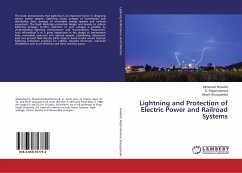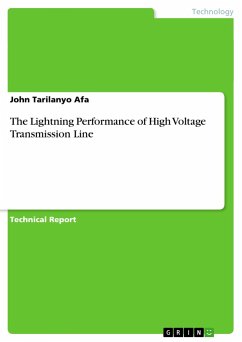This book demonstrates that lightning is an important factor in designing electric power systems. Lightning causes outages of transmission and distribution lines, damage of renewable energy systems and railroad equipment. The book illustrates protection design and devices to reduce lightning outages. Further reduction of such outages is possible by understanding lightning phenomenon and thunderstorm frequencies. Such information is of a great importance in the design of transmission lines, renewable resources and railroad systems. Establishing Isokeraunic level and ground flash density (GFD) maps in Saudi Arabia would improve lightning protection practices for utilities, elevated structures, industrial installations such as oil refineries and other sensitive assets.
Bitte wählen Sie Ihr Anliegen aus.
Rechnungen
Retourenschein anfordern
Bestellstatus
Storno








